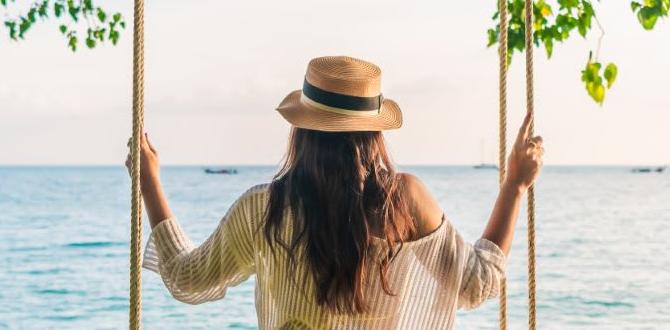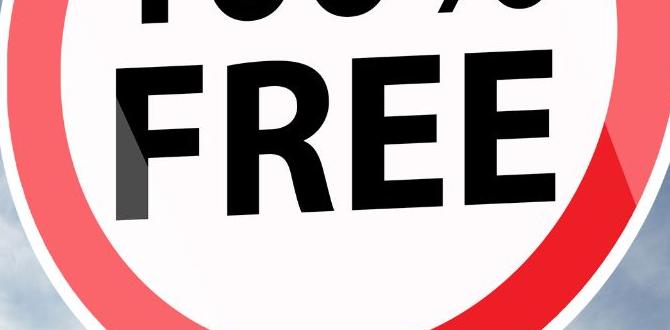Bishkek shoulder season trips offer a wonderful balance of pleasant weather, fewer crowds, and lower prices, making it an ideal time to explore Kyrgyzstan’s capital. This guide provides a step-by-step plan for essential preparations, packing, and activities, ensuring a comfortable and memorable adventure.
Planning a trip to Bishkek can feel a bit overwhelming, especially if you’re new to Central Asia. You might be wondering about the best time to visit, what to pack, and how to get around. Many travelers worry about unpredictable weather or missing out on key experiences due to crowds. But don’t worry! This guide is here to help. We’ll walk you through everything you need for a smooth and enjoyable Bishkek adventure during its shoulder seasons. Get ready to discover the magic of Bishkek without the peak-season hustle.
What are Bishkek’s Shoulder Seasons?
Bishkek, like much of Central Asia, experiences distinct seasons. The “shoulder seasons” are the periods just before and after the peak summer months. These are typically:
- Spring Shoulder Season: April to May
- Autumn Shoulder Season: September to October
These times offer a sweet spot. You can often avoid the intense heat of summer and the biting cold of winter, while also sidestepping the largest tourist crowds. This means a more relaxed experience, better accommodation deals, and a chance to connect more genuinely with the local culture.
Why Visit Bishkek in the Shoulder Season?
Choosing to visit Bishkek during its shoulder seasons brings a host of advantages:
-
Pleasant Weather: Spring brings blooming flowers and mild temperatures, while autumn offers crisp air, vibrant foliage, and comfortable days perfect for exploring.
-
Fewer Crowds: You’ll encounter fewer tourists at popular attractions, leading to a more intimate and authentic travel experience. This also applies to transportation, making it easier to secure tickets and seats.
-
Lower Prices: Flights and accommodation costs often decrease outside of the peak summer and winter holiday periods, making your budget stretch further.
-
Cultural Events: Both spring and autumn can host local festivals and events, offering unique insights into Kyrgyz culture.
-
Accessibility: Roads to many natural attractions outside the city, which might be inaccessible due to snow in winter or extremely hot in summer, are generally clear and manageable.
Planning Your Bishkek Shoulder Season Trip: A Step-by-Step Guide
Let’s break down the planning process into manageable steps. This will ensure you’re well-prepared and can focus on enjoying your trip.
Step 1: Choose Your Shoulder Season & Duration
April-May (Spring): Expect average temperatures to range from 10°C to 20°C (50°F to 68°F). You’ll see the city come alive with greenery, and the scent of blooming trees fills the air. However, be prepared for occasional rain and cooler evenings.
September-October (Autumn): Temperatures typically range from 5°C to 15°C (41°F to 59°F). This is when Bishkek’s parks transform with stunning autumn colors. The air is crisp, and days can be sunny and pleasant, though it gets colder as October progresses.
Duration: For a good overview of Bishkek and a day trip or two, a 5-7 day trip is usually sufficient. If you plan to explore further into the mountains or visit other regions of Kyrgyzstan, allow at least 10-14 days.
Step 2: Book Flights and Accommodation
Flights: As soon as you have your dates, start looking for flights. Use flight comparison websites to find the best deals. Booking a few months in advance, especially for international flights, often yields better prices.
Accommodation: Bishkek offers a range of options, from budget-friendly hostels and guesthouses to comfortable hotels and apartments. Shoulder seasons usually mean you can book closer to your travel date without significant price hikes, but it’s always wise to book at least a few weeks ahead, especially if you have specific preferences.
Types of Accommodation:
- Hotels: Range from international chains to local establishments, offering various amenities.
- Guesthouses: A great way to experience Kyrgyz hospitality, often family-run and affordable.
- Apartments: Ideal for longer stays or families, offering more space and self-catering facilities.
- Hostels: Excellent for solo travelers or those on a tight budget, providing dorms and private rooms.
Step 3: Visa and Travel Documents
Kyrgyzstan has a visa-free regime for many nationalities for stays up to 60 days. However, it’s crucial to verify the current visa requirements for your specific nationality well in advance. You can check the official website of the Ministry of Foreign Affairs of the Kyrgyz Republic for up-to-date information.
Ensure your passport is valid for at least six months beyond your intended stay and that you have a few blank pages. Make
copies of your passport and visa (if applicable) and store them separately from the originals, or keep digital copies on your phone or email.
Step 4: Create a Rough Itinerary
While spontaneity is great, having a basic plan ensures you see what you want. Consider these Bishkek highlights:
-
Ala-Too Square: The central square, home to the State Historical Museum and the Manas Monument. It’s a hub for national celebrations and daily life.
-
Osh Bazaar: A bustling, vibrant market where you can buy everything from fresh produce and spices to clothing and souvenirs. It’s a sensory delight!
-
Oak Park (Dubovy Park): A charming green space dotted with sculptures, perfect for a leisurely stroll.
-
Panfilov Park: Another popular park, often featuring amusement rides and a relaxed atmosphere.
-
State Historical Museum: Despite renovations, it offers insights into Kyrgyzstan’s rich history.
-
Victims of Oppression Garden: A poignant memorial site.
Day Trip Ideas:
-
Ala Archa National Park: A stunning alpine national park just a short drive from Bishkek. Perfect for hiking and enjoying mountain scenery. The accessibility in shoulder seasons is excellent, usually free of snow at lower altitudes.
-
Issyk-Kul Lake (Optional Longer Trip): While a bit far for a day trip, visiting a portion of the world’s second-largest alpine lake is a must if you have more time. Shoulder seasons offer quiet lakeside beauty.
-
Burana Tower: An ancient minaret and archaeological site dating back to the 11th century. It’s a fascinating glimpse into the history of the Silk Road.
Step 5: Pack Smart for Shoulder Season
Packing for Bishkek’s shoulder seasons requires layers. The weather can change quickly, so being prepared is key. This is where practical choices for comfort and ease come into play, much like ensuring you have comfortable travel essentials, whether it’s the right luggage or personal items like adult diapers for extended journeys, guaranteeing peace of mind on flights or long bus rides.
Clothing Essentials:
-
Layering is Crucial: Pack lightweight, breathable base layers (long-sleeved shirts, thermal tops). Add insulating mid-layers like fleece jackets or sweaters. A waterproof and windproof outer shell is essential.
-
Tops: A mix of short and long-sleeved t-shirts, a couple of warmer sweaters or fleeces.
-
Bottoms: Comfortable trousers (jeans, hiking pants, or chinos). Consider lightweight waterproof pants if you plan significant outdoor activities.
-
Outerwear: A medium-weight jacket that is waterproof and windproof. A down-filled or synthetic insulated jacket is great for cooler evenings or higher altitudes.
-
Footwear: Comfortable walking shoes or hiking boots are a must. Bring a pair of lighter shoes for evenings or city wandering. Waterproofing is a bonus.
-
Socks: Wool or moisture-wicking socks are best, especially for hiking.
-
Accessories: A warm hat, gloves, and a scarf are essential, especially for early mornings, evenings, or trips to the mountains. Even in spring, mountain weather can be unpredictable.
-
Undergarments: Pack enough for your trip, plus a few extra.
Special Considerations for Comfort and Reliability:
If you have specific health needs or simply prefer an extra layer of security for long travel days, consider packing personal care items. For example, quality adult diapers can provide confidence and comfort during flights, bus journeys, or extended excursions where facilities might be limited. Similarly, for parents traveling with young children, ensuring you have child diapers readily available is part of stress-free planning. Having these essentials packed means you can focus on experiencing Bishkek, rather than worrying about potential discomfort.
Toiletries and Personal Items:
- Travel-sized toiletries (shampoo, conditioner, soap, toothpaste, toothbrush).
- Sunscreen and lip balm (the sun can be strong, even in cooler months).
- Insect repellent (especially if visiting parks or rural areas).
- Any personal medications.
- Hand sanitizer and wet wipes.
Electronics:
- Mobile phone and charger.
- Power bank (highly recommended for long days out).
- Travel adapter (Kyrgyzstan uses Type C and Type F plugs, 220V).
- Camera and accessories.
Documents and Money:
- Passport and visa (if required).
- Flight and accommodation confirmations.
- Travel insurance details.
- Credit/debit cards and some local currency (Kyrgyzstani Som – KGS).
Step 6: Understand Transportation in Bishkek
Getting around Bishkek is relatively easy and affordable.
-
Marshrutkas: These are shared minivans that follow fixed routes. They are the cheapest way to travel but can be crowded and slightly intimidating for first-timers. You hail them, pay the driver (usually a set small fare), and signal your stop.
-
Buses and Trolleybuses: A great public transport option for longer distances within the city. Fares are very low.
-
Taxis: Plentiful and affordable. It’s best to use ride-hailing apps like Yandex Go (which is very popular and reliable in Bishkek) to get fixed, fair prices and avoid overcharging. Agree on the fare or ensure the meter is used if hailing directly.
-
Walking: Bishkek’s city center is quite walkable, allowing you to discover hidden gems.
For day trips, you can hire a taxi for the day (negotiate a price beforehand), join an organized tour, or use shared taxis from specific stands (e.g., to Ala Archa National Park).
Step 7: Money Matters and Connectivity
Currency: The local currency is the Kyrgyzstani Som (KGS). ATMs are widely available in Bishkek, and most larger shops and hotels accept credit cards. However, for markets, smaller businesses, and taxis, cash is king.
Exchanging Money: You can exchange Euros or US Dollars at exchange bureaus in the city. Exchange rates are generally favorable.
Connectivity: Getting a local SIM card is very affordable and recommended for easier navigation and communication. You can purchase one at the airport or at shops in the city. Major providers include Megacom, Beeline, and O! Expect reasonable data packages for a week or two of travel.
Wi-Fi is commonly available in hotels, cafes, and restaurants.
Step 8: Food and Drink
Kyrgyz cuisine is hearty and delicious, with influences from nomadic traditions and neighboring countries. During shoulder season, enjoying local hospitality is a highlight.
Must-Try Dishes:
- Beshbarmak: A traditional dish of boiled meat (usually lamb or beef) and noodles, often considered the national dish.
- Plov: A rice dish cooked with meat and vegetables, similar to the Central Asian pilaf.
- Lagman: Hand-pulled noodles served in a hearty soup or stir-fried with meat and vegetables.
- Manti: Steamed dumplings filled with meat, onions, and spices.
- Samsy: Baked pastries filled with meat or pumpkin.
- Shashlik: Skewered and grilled meat, a popular street food.
Drinks:
- Kumys: Fermented mare’s milk, a traditional nomadic drink with a tangy taste.
- Tea (Chay): Black tea is widely consumed, often with milk or sugar.
- Local Beer: Several local breweries produce decent lagers and ales.
Food Safety: Stick to bottled water and be cautious with raw salads or unpeeled fruits, especially in markets. Cooked food from reputable restaurants is generally safe.
Sample Bishkek Shoulder Season Itinerary (6 Days)
This is a flexible template. Adjust it based on your interests and pace.
Day 1: Arrival and City Exploration
- Arrive at Manas International Airport (FRU).
- Transfer to your accommodation.
- Settle in and take a walk around your neighborhood.
- Visit Ala-Too Square and take photos.
- Enjoy your first taste of Kyrgyz cuisine at a local restaurant.
Day 2: Markets and Parks
- Morning: Immerse yourself in the vibrant Osh Bazaar.
- Lunch: Grab a quick and tasty bite at the bazaar or a nearby cafe.
- Afternoon: Stroll through Oak Park and Panfilov Park.
- Evening: Consider a traditional dance performance or enjoy local live music.
Day 3: Mountain Escape to Ala Archa
- Full day trip to Ala Archa National Park via shared taxi or private hire.
- Enjoy hiking, fresh mountain air, and spectacular views. Pack a picnic lunch or eat at the small cafe near the entrance.
- Return to Bishkek in the late afternoon.
Day 4: History and Culture
- Visit the State Historical Museum (check its current exhibition status).
- Explore the Victims of Oppression Garden.
- Option: Visit the Kyrgyz State Fine Arts Museum if art is of interest.
- Evening: Try a modern café or restaurant in Bishkek for a different culinary experience.
Day 5: Day Trip to Burana Tower
- Hire a taxi or join a tour to visit Burana Tower.
- Explore the nearby petroglyphs and miniature museum.
- Enjoy the scenic drive through the countryside.
- Return to Bishkek by the afternoon.
- Evening: Enjoy a farewell dinner.
Day 6: Departure
- Enjoy a final Kyrgyz breakfast.
- Depending on your flight schedule, do some last-minute souvenir shopping.
- Transfer to Manas International Airport for your departure.
What to Wear: A Visual Guide (Table)
Packing effectively is key. Here’s a quick reference for clothing essentials for both spring and autumn shoulder seasons.
| Item | Spring (April-May) | Autumn (September-October) | Notes |
|---|---|---|---|
| Base Layer | Lightweight long-sleeve tops, thermals | Lightweight long-sleeve tops, thermals | Breathable fabrics like merino wool or synthetics. |
| Mid
|






